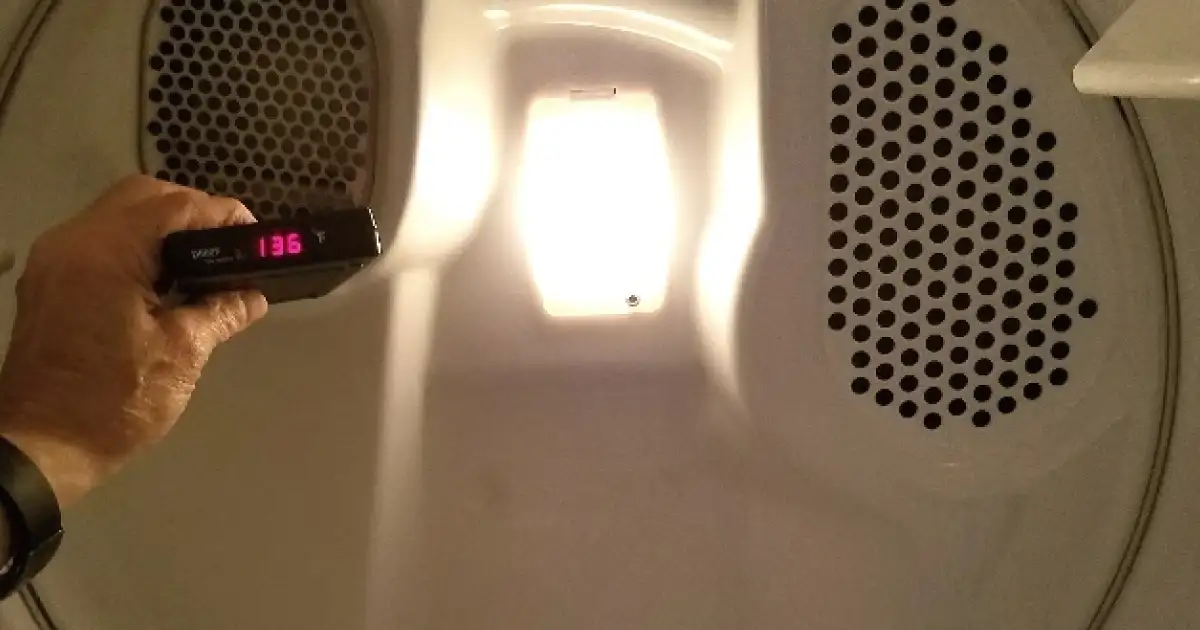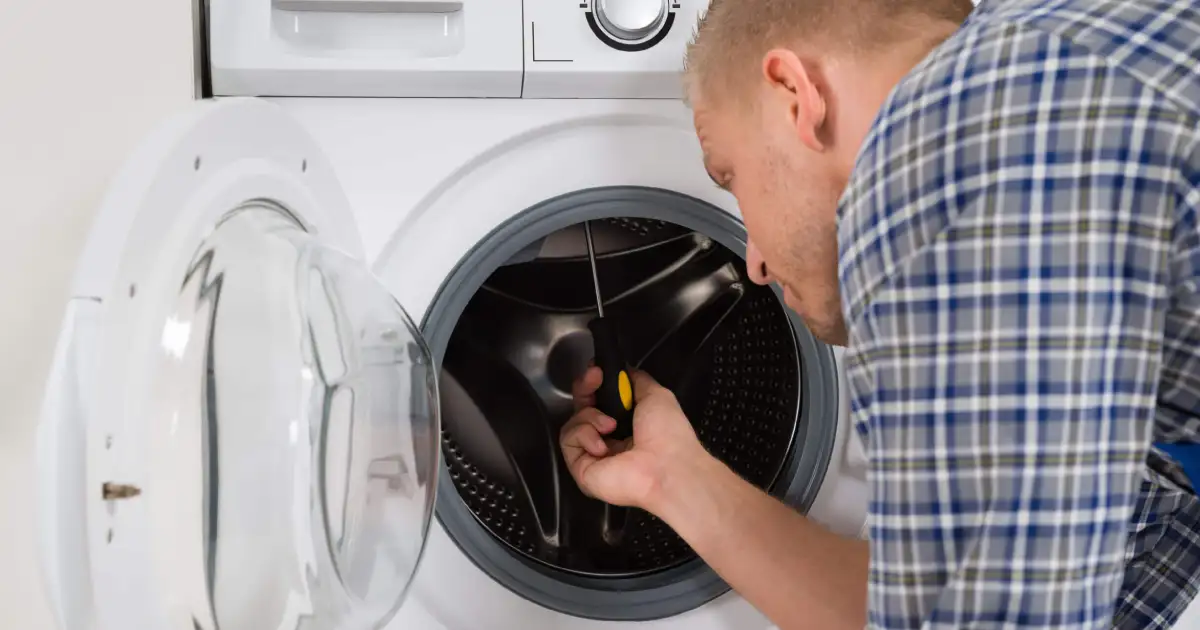Do you know that understanding how hot a dryer vent gets is super important for keeping your home safe and efficient? Many of us just put our clothes in the dryer, set the timer, and go about our day without thinking about possible dangers.
However, knowing the usual temperatures and what can make these temperatures rise is very important. High dryer vent temperatures can cause several problems, like a higher risk of fires, increased energy bills, and damage to your clothes.
So, how hot does a dryer vent get? When the dryer is working properly, the maximum temperature of the exhaust shouldn’t exceed 200°F.
As a user, you should know the temperature limit, what causes these high temperatures, and effective tips to reduce these risks.
Today’s topic will cover that all.
The Ideal Dryer Vent Temperature
When the dryer is working properly, the maximum temperature of the exhaust or venting shouldn’t go over 200°F. As your dryer heats and dries your clothes, the warm, moist air is pushed out through the exterior vent.
If you have a standard vented dryer, it’s normal for your vent to release some heat, but be careful of the temperature limit.
As you now know the vent temperature, you should also know about how hot a clothes dryer gets. Your dryer temperature can vary depending on the type of dryer and the settings you use, but it usually falls between 120°F and 160°F.
For example, higher heat settings made for drying heavy fabrics like towels or jeans will make the vent temperatures go closer to the higher end of this range.
Know that some commercial dryers can get as hot as 176°F.
If the Dryer Vent Temperature Exceeds the Limit, What Problems Will You Face?

If your dryer vent surpasses the recommended limit, it’s a sign that something might be amiss.
Here’s where things can get risky:
Fire Hazard
Excessive heat is a major fire hazard. Lint buildup in the vent can easily ignite at high temperatures, which potentially leads to a house fire.
According to the National Fire Protection Association (NFPA), clothes dryer fires account for an average of 13,820 reported incidents per year in the United States from 2014 to 2018.
Efficiency in the Drain: Higher Bills and Worn-Out Appliances
When a dryer vent gets too hot, it’s not just a fire risk; it also costs you more money and wears out your appliance faster. If lint builds up or there are issues with the vent, the dryer has to work harder to push out hot air.
This means:
Longer Drying Times: Your clothes take longer to dry, which wastes your time and can be frustrating.
Increased Energy Use: Trying to push hot air through a clogged vent uses more electricity, so your bills go up.
A study by the American Council for an Energy-Efficient Economy found that keeping your dryer vent clean can make it work 30% more efficiently.
Premature Wear: The extra strain on the dryer’s motor and heating element can make it wear out faster, so you might have to pay for repairs or a new dryer sooner.
In addition, you can visit our blog to learn, “Are indoor dryer vents safe?”
When Dryer Vents Get Too Hot
Several factors can cause a dryer vent to overheat, including:
Clogged Vents
If you notice lint buildup in the vent, then, you should know that it’ll block airflow, which is one of the reasons behind the dryer vent’s overheating.
Lint naturally builds up when drying clothes. If you don’t clean your vent often, this lint gathers and traps heat inside the vent. So, you should regularly clean the lint trap and vent system.
Long Vent Length
If your dryer exhaust or vent is very long, it makes it harder for the hot air to move through. This can make the vent get hotter.
The International Association of Certified Home Inspectors (InterNACHI) sets rules for how long dryer vents can be. They say the vent can’t be longer than 25 feet and should be as straight as possible.
If there’s a 90-degree turn in the vent, it shouldn’t be more than 20 feet long.
Vent System Issues
If the vent pipe has bends, kinks, or crushed parts, it blocks airflow and holds in heat.
Improper Dryer Installation
If your dryer isn’t perfectly installed, it might not vent properly. This can make heat build up in the dryer and vent system.
Besides, you can check out our insightful blog to get a detailed idea of how to stop dryer lint from blowing outside.
How to Fix a Dryer That’s Too Hot

Your dryer could be overheating for several reasons that we’ve already talked about. Let’s check out potential issues you might need to fix if your dryer is getting too hot.
Remember to seek professional help to diagnose any unknown problems with your appliances.
Dryer Blower Issue
We know that the dryer blower pulls air into the dryer and pushes out hot, damp air through the vents. Check if it is working properly. If you notice that it’s making strange noises or taking longer to dry clothes, that blower might need replacing.
Clogged Vent
If it’s been a while since you cleaned your dryer’s vents and it’s overheating, it might be due to a clogged vent. Cleaning your vents regularly can help stop this issue.
Lint Trap Cleaning
Keep the lint trap clean after each load and give it a deep clean every six months to stop blockages.
Heating Element Check
The heating element in electric dryers generates heat. Plus, do you know that gas dryers even make more heat than electric ones?
So, if it’s damaged or shifted, it can cause the dryer to overheat. Reach out to a professional to diagnose and possibly replace the heating element.
Inspect Duct
Check behind the dryer for any crushed ducts. Crushed dryer ducts can trap moisture and affect dryer performance. If you find any, please replace them to ensure proper airflow.
As this write-up covers everything regarding the temperatures of your dryer, you might have queries about two more important details, like “How hot does a dryer vent hose get,” and “How hot does a dryer vent pipe get?”
Here’s the brief for you. Dryer vent hoses and pipes typically reach temperatures between 120°F (49°C) and 160°F (71°C) during normal operation.
If you’re somehow thinking about whether you can run a dryer without the vent hose or not, give our informative blog a thorough read.
Contact a Pro
You need a pro dryer vent cleaning. Why? Because if your clothes take too long to dry or you see higher energy bills, your vent might be clogged.
Steam Express in Houston offers expert cleaning to remove lint and debris, which ultimately makes your dryer safer and more efficient.
Call now for a free estimate and a special discount!
Wrapping Up
So, hopefully, you’ve got a pretty good idea about your question, “How Hot Does a Dryer Vent Get?” Having this knowledge is important for keeping your home safe and efficient. By understanding the risks and taking steps to stop overheating, you can make sure your dryer lasts longer and keeps your family safe. Don’t forget to clean your vents often, check your dryer works well, and get help from experts if you need it to keep your dryer running smoothly.


